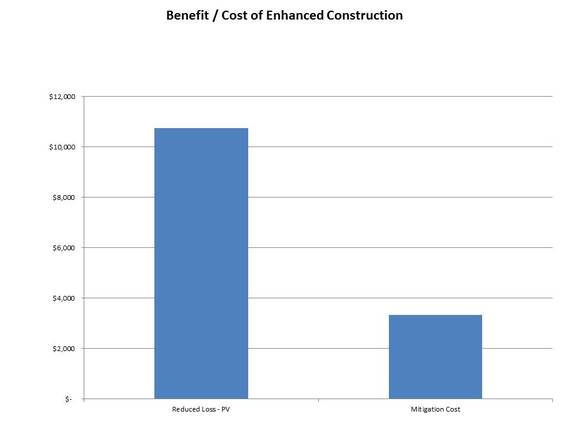It seems that each spring brings a new round of violent weather. And with each storm another reminder that failing to anticipate the awesome power of nature can be deadly but almost always expensive. To save lives people need to always be aware of the threat of severe weather and what their options are should they be in the path of a violent storm. But actions to limit the damage from violent weather begin long before the storm arrives. Consider the wisdom of a children's story, The Three Little Pigs. The first 2 brothers chose economy and speed while the third brother takes the time, and added expense, to build a home that can survive a visit from the wolf.
If you live in a region where wind storms turn violent, such as occured in Illinois, you know that you live with a wolf. The question is: do you want a house of straw or a home that can minimize the damage visits from the wolf can bring? The argument against enhanced construction has always been that the added cost does not justify the reduction in damage. Building a home for a violent tornado is cost prohibitive. But I have a new academic paper, published this month in Weather, Climate and Society that questions that reasoning. A full summary of the paper is provided on my blog here.
This paper was motivated by actions of the City of Moore, OK which increased the wind load standard from 90 mph to 135 mph last year. A standard that would include all tornadoes through EF-2. The estimated cost of these enhancements is $1 per square foot. For an average home in OK, that adds $2,000 to the cost. If all 1.6 million homes in Oklahoma been built to this standard the increased cost would be $3.3 billion.
Over the last 25 years, the state of Oklahoma has experienced $32 billion in insured losses of which about 65% is residential. Extrapolating that estimate across the 50 year life of the structure, adjusting for inflation, then discounting the estimate back to current dollars provides an estimate of almost $36 billion in expected residential losses from tornadoes for Oklahoma. For the new requirements to be cost effective damage must be reduced by at least the cost of the enhanced construction, $3.3 billion. So how much difference will the new codes make?
To answer this question, first you need to realize that tornadoes do not have a consistent wind field across the life or area of the storm. Tornadoes are rated based on the damage consistent with the highest winds found along the path. So an EF-5 tornado is rated EF-5 because somewhere along the path, damage was discovered that could only be caused by winds in excess of 200 mph. But on average, that is less than 2% of the entire path of an EF-5 tornado. Almost 90% of EF-5 tornado wind fields are within the range the Moore, OK codes are designed to handle. With that in mind, we estimate that 65% of the damage currently caused by EF-0, EF-1 and EF-2 wind fields could be reduced by the Moore codes. That would reduce overall tornado damage by 30%. So the $36 billion in expected residential damage in OK could be reduced by $11 billion easily surpassing the increased cost of $3.3 billion.
So, given the fact that better construction is not only effective in reducing damage but also pays for itself in high risk areas, why is it so difficult to convince people to build better homes? Unfortunately, an old adage finds another application, "Penny wise and Pound foolish".

